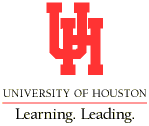 |
 |
 |
 |
 |
 |
 |
For further information, or to suggest a colloquium speaker, please
contact
the organizer.
|
 |
 |
 |
 |
 |
 |
 |
 |
To subscribe to the Colloquium mailing-lists, please
email the organizer.
|
 |
 |
 |
 |
|
 |
 |
 |
 |
Print
Announcement
Paul Bressloff
University of Utah
Spontaneous brain dynamics: neural fields, patterns and symmetry
April 17, 2019
3:00 pm PHG 646
|
Abstract
|
|
|
|
Advances in experimental techniques, including fMRI, optical imaging,
multi-electrode recordings, and optogenetics, combined with
sophisticated data analytic tools, are beginning to shed light on the
intricate functional architecture of specific brain regions, and how
this provides a substrate for both spontaneous and stimulus-evoked
neural activity patterns. In this talk, I use the mathematical theory
of neural fields (spatially-structured neural networks) to explore the
relationship between structure and dynamics in various models of
visual cortex. I begin by showing how the common types of geometric
hallucinations arise dynamically through the spontaneous formation of
neural activity patterns within the cortical network. This suggests
that the cortical mechanisms that generate geometric visual
hallucinations are closely related to those used to process edges and
contours in normal vision, which is consistent with recent findings by
experimental collaborators. I then show how stochastic neural fields
can be used to investigate the stimulus-dependent suppression of
neural variability in multiple-attractor networks. The underlying
topology of the network is taken to be the circle S1 or the sphere S2
and the corresponding neural field equations are taken to have
rotation symmetry. Both the underlying symmetry group and the
curvature of the attractor manifold (in the case of S2) play a crucial
role in understanding the effects of noise.
|
|
 |
 |
 |
 |
|
|

